Above: After initial Southborough K-8 student projections were questioned, NSBORO’s consultant adjusted it algorithms, resulting in a very different outlook for enrollments. (click image to enlarge)
Two weeks ago, I shared an update on the subcommittee researching the potential closing of a Southborough school. At the time, I noted that officials were concerned by, but skeptical of, the growth projection for K-8 student enrollments over the next ten years. Since then, a revised report was issued, now projecting a continued decline for the next decade.
It’s a difference between a 20% increase and a 4% decrease in the student population. (See the initial and revised projections below.)
Superintendent Gregory Martineau discussed the revised projections at last night’s School Committee meeting. (Members were also reminded that the figures don’t include any impact if the Park Central development project is approved and proceeds. The developer purportedly projected it would add another 100 K-8 students.)
The big shift in narrative caused School Committee members to question whether they could trust the consultant’s projections. Some members worried about relying on those figures when making decisions about the school’s capital needs and facility capacity.
Martineau reassured that no major change would be made relying only on the NESDEC projections. He reminded that if the Mass School Building Authority approves the district’s statement of interest for a project at Neary School, it would open a 280 day study. That would include a deeper look at the district’s future enrollments with MSBA’s help. Contingency planning is also part of that process.
Member Keturah Martin, who serves on the School Research Subcommittee, addressed the potential for unexpected growth whether from Park Central or another unforseen factor. She noted that any plans for reconfiguring school spaces would include “a certain amount of cushion”.
School Committee Chair Roger Challen explained potential next steps discussed at a meeting with Martineau and Martin on Monday.* Administration leadership will work with the elementary school principals and educators to do a “programmatic review” for grade and class configurations. The point is to report out to the school committee what their space needs are depending on the number of students in each grade.
Martineau confirmed that he believed they would be able to report back in May. The Committee agreed to support the effort.
As for how such a big change in projections occurred. . .
Martineau explained that NESDEC’s initial projections called for a significantly bigger figure for the Kindergarten enrollment next year than Finn School’s data indicated. When he contacted NESDEC about the disparity, he learned that their algorithms were aggressively calculating a ceiling for enrollments. After discussions about more reasonable expectations for next year’s Kindergarten class, NESDEC adjusted its algorithms.
Martineau stressed that the incorrect figure for that one class next year carried through the following eight years, compounding the high projections. Member Jessica Devine questioned why the revised table shows Kindergarten still increasing next year, then decreasing the next year. Martin explained that next year includes a number of students that parents held back an extra year due to the pandemic.
You can see the initial and revised enrollments broken down by grades below. (For the full revised projections report, click here.)
The initial report for projected growth was still showing figures far short of the district’s peak enrollments around 2004 when the Town built Woodward School.
As I previously reported, the administration and members of the Town’s Capital Planning Committee are exploring whether closing/repurposing a school building makes sense logistically and financially. (You can read more about the potential benefits here.)
Martineau made a statement in last night’s meeting aimed at educators and parents worried about the potential plans. He stressed the importance of including educators in strategic planning discussions. And he reassured that all stakeholders, including parents, would have a chance to be heard before any big decisions were made.
*Monday’s meeting was of the School Committee’s subcommittee for Capital Planning. That is not to be confused with the Capital Planning Committee’s School Research Subcommittee. The latter group is scheduled to convene tomorrow morning for the first time since the revised figures were released.

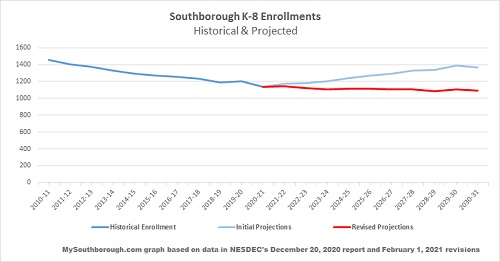
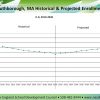
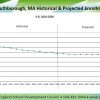
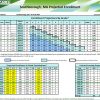
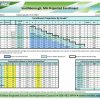

“…officials were concerned by, but skeptical of, the growth projection for K-8 student enrollments over the next ten years. Since then, a revised report was issued, now projecting a continued decline for the next decade.”
So the report was totally revised to show a vastly differing result — so that it would conform to officials’ skepticism? Something seems amiss. Who pressured whom? What’s going on behind the scenes?
Yes, it would confirm officials’ skepticism. The original numbers showed an almost complete V in the historical and projected enrollments over 20 years. It was a far different outlook than the Capital Planning Committee, Advisory Committee, or school officials expected.
The fact that the numbers for next year’s new class were so much higher than the administration has any indication is likely for September, seemed to confirm something was off.
There were other questions raised about the validity of assumptions made in NESDEC’s algorithms. For instance, they indicated that a strong real estate market showed that baby boomers would be selling houses to millenials who would move in with school aged children. That pushed a narrative that enrollments would rise.
But as I previously wrote, Keturah Martin pointed out that their historical data showed a consistent growth in home sales over the past ten years while enrollment consistently declined. The consultant’s explanation was that millenials were waiting longer to have families. But that doesn’t seem to explain the difference between historical and projected data if the assumption is also that those that buy homes in Southborough do so with school aged children.
There were other questions raised by the subcommittee about apparent disconnects in the data. The fact that Martineau would be asking NESDEC to clarify or revise figures based on his and the subcommittee’s questions was discussed ad nauseum at several public meetings between the issuing of the first report and the revision. You can read more about that in my prior post.
In the end, he said their algorithm was based on a ceiling that appeared to be too aggressively high. After understanding from the Superintendent what more realistic expectations were for next year’s Kindergarten class, the algorithm was adjusted.
The good thing about the projections including September is it won’t be too long until we all have a better idea of how accurate/inaccurate those projections are.
When doing projections in real science, ranges and confidence levels are used. In particular as time gets further out the range will get larger and confidence will get lower. Considering we’ve had about 120 students per year for the past 7 or so years, the revised estimates look fair on the surface. However, it is my impression that we are at a low point, demographically, enrollments can’t get much lower than they are now. Considering we’ve had class sizes up to 180+ in the past, it is proven that the size of the town can fit those demographics even if today’s don’t. When doing this kind of analysis, taking into consideration the worst case scenario and the odds of those worse case scenarios occurring is important.
Covid has added a lot of uncertainty, demand for city living is declining and there is a lot of talk about many jobs staying work from home permanently, the real estate market is already demonstrating this. All those things would likely cause an increase in school enrollment. If I were on the school board I wouldn’t use these projections at all, they simply don’t provide enough data.
Frankly, I’m disappointed that this is being discussed at all right now. We are in the middle of one of the most disruptive school years of all time, while the teachers are all doing a great job given their limitations, I personally don’t think the district has done nearly as good of a job as they could have on many fronts. Is this an attempt at a distraction from how badly this year has gone? Has this year gone worse than it could have because the administration isn’t focused?
Here are two very easy predictions:
We will not be closing a school and repurposing it. Neary has been repurposed for years with the superintendent’s office there (those offices were never discussed when we voted on the new school configuration years ago).
Substantial PILOT funds from St Mark’s and Fay school will not happen. Substantial being defined at >$50K per year in perpetuity.
I would be happy to be wrong.